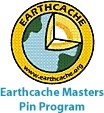
 As
you embark or continue your journey to discover and explore
beautiful and historic rocks, waterfalls, peaks, creeks and other
wonders, please keep in mind that these places need to remain wild
and protected so that they may be enjoyed by others for generations
to come. Please be diligent in respecting these sites by doing the
following:
As
you embark or continue your journey to discover and explore
beautiful and historic rocks, waterfalls, peaks, creeks and other
wonders, please keep in mind that these places need to remain wild
and protected so that they may be enjoyed by others for generations
to come. Please be diligent in respecting these sites by doing the
following:
- Please keep trash with you at all times, do not leave it behind
in these pristine places.
- Bury human waste 6 inches deep, make certain you are at least
50 paces away from any water source and PLEASE bring your toilet
paper and sanitary items back out with you.
- Keep food and all scented items on your person at all
times.
- Support wildlife by allowing them to find their own food, do
not feed them.
- Allow plants to grow and water to stay clean by staying on
trails, bike paths and roads.
Thank you, Yosemite Wilderness Management
There is a small area to pull off the road and have a look at
Siesta Lake. Be careful of the highway traffic. Tioga Road is
closed in the winter.
During one of the last glaciations, a glacier flowed through
this area stopping at about this point. The road is built through
the terminal moraine of this glacier. This moraine blocked the flow
of a stream forming Siesta Lake.
From the moment it formed, the lake began filling with sediment.
The rate at which this happens is related to the how much sediment
is transported into the lake and the organic content of the lake.
Each spring, melting snow erodes sediment off the surrounding
mountains and transports it to the streams that fill the lakes of
the Dinkey Lakes Wilderness. While in the streams, the water flow
is fast enough to keep the sediment moving. When the water reaches
a lake, the speed of the water slows depositing the sediment in the
lake. This sediment begins to fill the lake from the point where
the stream enters the lake, forming a delta. This process alone
will bring enough sediment to eventually fill the lake from its
side. However, the in-filling process can be greatly increased by
elevated biologic activity in the lake.
Biologic activity includes shore plants, underwater plants,
freshwater plankton, algae, aquatic life, among other things. As
these things die, they settle to the bottom of the lake filling it
in and providing nutrients for more biologic growth. This process
generally fills the lake in from the bottom up as material settles
to the bottom.
Three stages of lake development have been developed by limnologists to describe the aging of a lake. These
stages are called trophic states, oligotrophic, mesotropic, and
eutrophic. These states are most easily recognized by the amount of
biologic activity in the lake. Oligotrophic lakes are clear with
little biologic activity. Eutrophic lakes look cloudy and have a
lot of biologic activity. Mesotropic lakes are somewhere in
between.
Urban and agricultural runoff can contain various nutrients that
can greatly increase biologic activity. The increased biologic
activity then increases the rate of eutrophication of the lake.
This artificial increase is called cultural eutrophication.
All the stages of eutrophication are natural processes and each
has its own benefits. Oligotrophic lakes would be great swimming
lakes and provide beautiful picturesque landscapes. An eutrophic
lake would probably be an excellent fishery and wildlife
habitat.
Logging questions:
- The text "GC2M29C Siesta Lake Eutrophication " on the first
line
- The number of people in your group.
- What stage of eutrophication is Siesta Lake?
The following sources were used
to generate this cache:
- Matthes, Francois. 1930 USGS.
Geological Survey Professional Paper 160 Geologic History of the
Yosemite Valley.
http://www.nps.gov/history/history/online_books/geology/publications/pp/160/index.htm
Last Updated: 28-Nov-2006
- Kiver, Eugene and David Harris.
1999. Geology of U.S. Parklands Fifth Edition, John Wiley &
Sons, Inc.
- Yosemite Association, 1942
Yosemite Road Guide, Revisions made in 1956, 1963, 1965, 1970,
1976, 1981, and 1989.
- NPS Informational
Pannel.